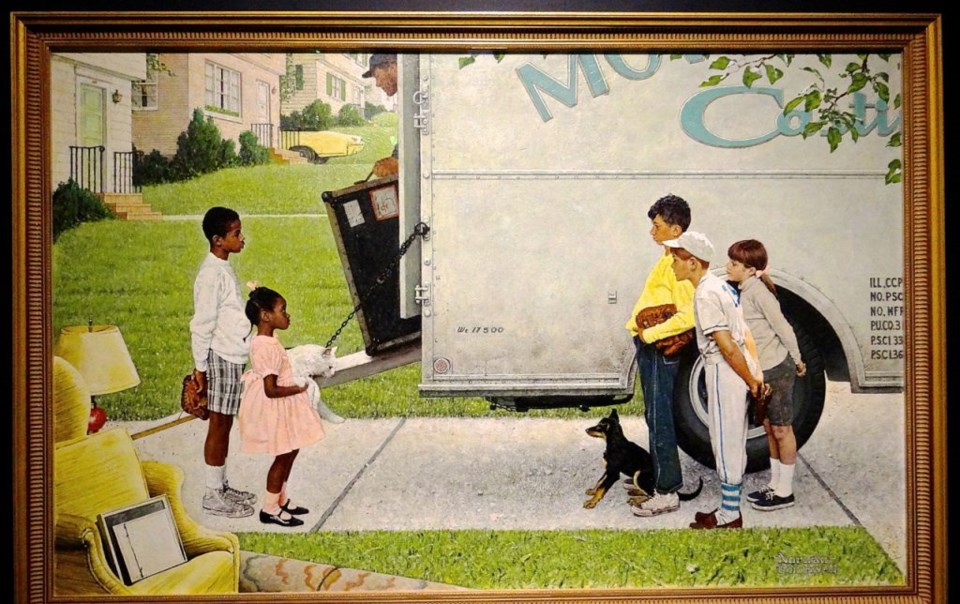During the social upheaval of the 1960s, thousands of artists who lived through the Civil Rights Movement created art that would speak to the dramatic events of that time.
What emerged was a cannon of powerful works by artists of all backgrounds who used a wide range of aesthetic approaches: abstraction, assemblage, minimalism, pop art and photography, to name a few.
On Friday, March 7, The Brooklyn Museum will debut Witness: Art and Civil Rights in the Sixties, a presentation of 103 works by 66 artists, all of whom were influenced by and responded to the political and social turmoil of the 1960s.
Co-curated by Teresa A. Carbone, Andrew W. Mellon Curator of American Art at the Brooklyn Museum, and Kellie Jones, associate professor in the Department of Art History and Archaeology at Columbia University, the exhibition marks the 50th Anniversary of the Civil Rights Act, passed in 1964.
"Very often what you had artists doing, whether they were collages or assemblage artists or bringing the two together, was trying to embed evidence of the political realities of the time in their work," said Carbone. "It was similar to what WPA artists were doing, when they went and took photographs and recorded people-- trying to really ground their art in the substance of reality."

Norman Rockwell, New Kids in the Neighborhood (Negro in the Suburbs), (1967). Oil on canvas. Norman Rockwell Museum Collection, Stockbridge, Massachusetts. Printed by permission of the Norman Rockwell Family Agency.
"One day we were protesting for racial justice, and the next day, we were dealing with the tragedy of Vietnam," said Arnold L. Lehman, director of The Brooklyn Museum. "But they were good memories. Because even if you played [a small] role, you felt as though you were doing something significant."
"So That's why this show is so important: To remind people today that that struggle is ongoing," Lehman said.
"This piece called Soldiers and Students is by Jacob Lawrence, a well-known African-American artist," said Jones. "When he made this piece, he was living in Brooklyn. Here you see the students going into the schools to integrate them and they're being protected by the soldiers as they go into school.
"You also see an effigy being burned of a black person there, so you feel some of the violence going on as they try to go about their life. But Jacob Lawrence was a part of the school known as social realism, figurative work. He was one of the most well-known African-American artists of this time.
"So when this moment came up, he became like a beacon for a lot of younger artists who wanted to use their work to change the world."

Robert Indiana, The Confederacy: Alabama, (1965). Oil on canvas. Miami University Art Museum, Oxford, Ohio. Gift of Walter and Dawn Clark Netsch.
"This amazing work is by Robert Indiana, part of a form painting series called "The Confederacy," in which he focused on four southern states: Florida, Louisiana, Alabama and Mississippi. And he uses the same motif in all of them," said Carbone.
"You'll read, 'Just As In The Anatomy of Man, Every Nation Must Have Its Hind Part.' And then he wrote out the names of the cities where particularly egregious violence had taken place in the course of the struggle for Civil Rights.
"Indiana was a very actively political artist. We were looking for these works that were very evocative of the involvement of artists and their desire to somehow achieve a level of activism in their work"

"This is called an assemblage. It is a sculpture made from found objects. What this piece is commemorating are the Freedom Rides, when young people rode buses down South to help people register to vote," Jones said. "People were attacked, killed. Hence, you have the tire tracks on them.
"It's important that they are dolls and they are babies, because these people were young when they were standing up. Ruby Bridges was six years old when she integrated that school. Think about how brave they were. The average age of a SNCC volunteer was 21-- the average age. That's why this is an important piece.
"Kienholz was a white artist well known for his political work-- not always about race or civil rights, but he did some significant pieces about this issue throughout the years."
Also represented in the exhibit are works by Charles Alston, Norman Lewis, Romare Bearden, Charles White, Faith Ringgold, May Stevens, James Rosenquist, Betye Saar, Jeff Donaldson and many more.
Witness: Art and Civil Rights in the Sixties will be on view at the Brooklyn Museum, located at 200 Eastern Parkway, in Prospect Heights, from March 7 through July 6, 2014.




